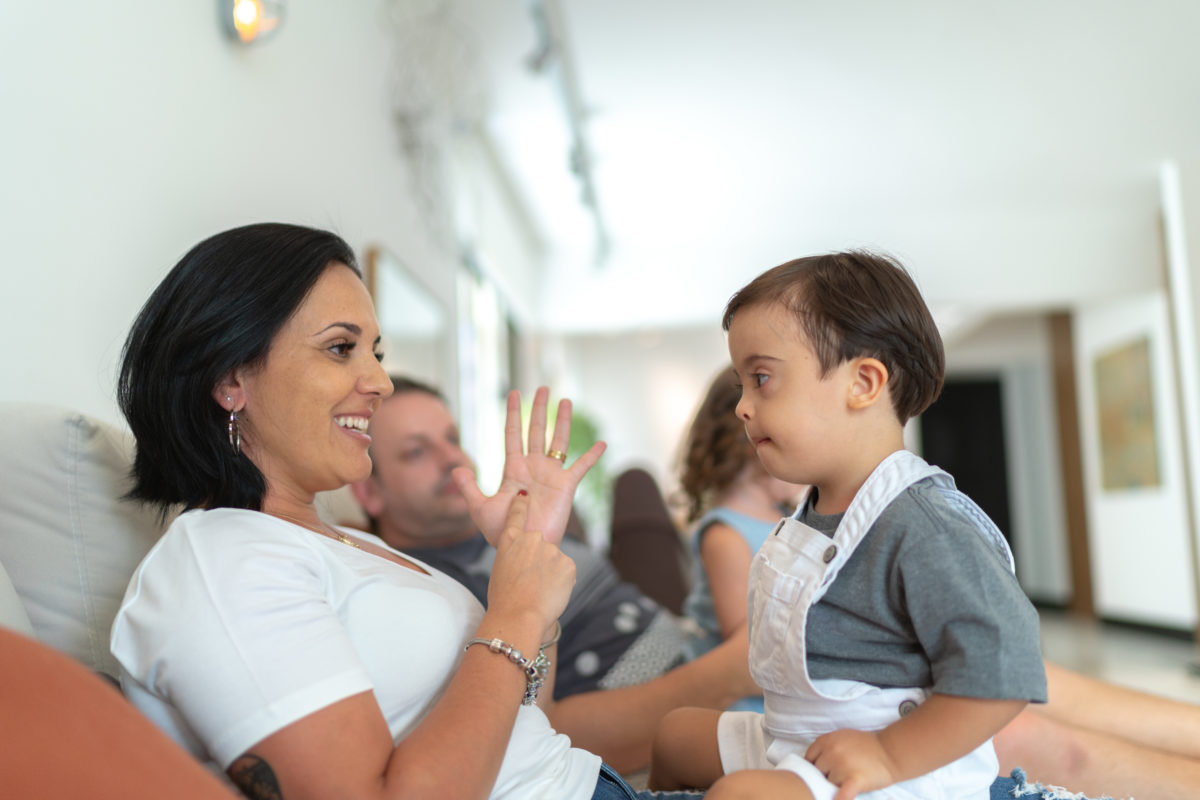Most kids start talking around a year old, but in reality, babies could use a way to communicate long before that. Most try to tell their parents what they need by screaming, crying or having a tantrum. But some caregivers may have found a better way to communicate.
“Parents and teachers have started using sign language to help babies communicate before they’re able to form words verbally,” says Dr. Audrey Atkins, a medical director at BlueCross BlueShield of Tennessee. “Many report that infants and toddlers are able to communicate their needs and even emotions using simple signs, which creates a communication lifeline during these challenging but critical years.”
When should you start teaching sign language?
Dr. Atkins: Children generally start babbling early. By 9 months they probably know a few words like “mama” or “dada.” At the 12-month checkup, pediatricians want them to know at least 3 words in addition to mama and dada.
When it comes to teaching sign language, you can start at any time. Around 8 months is optimal, but I’d say feel free to start around 6 months. Just know it can take the child anywhere from 8-10 months to sign back. If you wait until their first birthday to start signing, it’s going to take longer.
What are the most common signs?
Dr. Atkins: The sign language we use with infants is different from American Sign Language (ASL). It’s much simpler, and it’s just word by word. We’re not trying to form sentences. Simple things kids communicate might be “I need some more” or “All done now.”
Healthline offers these common words and signs
| Word/phrase | Sign |
| Drink | thumb to mouth |
| Eat | bring pinched fingers of one hand toward mouth |
| More | pinched index fingers touching at midline |
| Where? | palms up |
| Gentle | patting back of hand |
| Book | open and close palms |
| Water | rubbing palms together |
| Smelly | finger to wrinkled nose |
| Afraid | pat chest repeatedly |
| Please | palm on upper right chest and moving hand clockwise |
| Thank you | palm to lips and then extend forearm outward and down |
| All done | forearms up, rotating hands |
| Bed | palms pressed together next to cheek, leaning head toward hands |
“Many parents also use the signs to communicate things around the house in a fun way, such as ‘ball,’ ‘dog,’ or ‘play,’” says Dr. Atkins. “You can also combine signing with simple songs like ‘Twinkle, Twinkle, Little Star’ to engage kids even more.”
What are the benefits of trying toddler sign language?
Dr. Atkins: The biggest benefit of sign language is that it gives kids a way to communicate before they can form words verbally. When a child can sign, “I’m hungry” rather than having a tantrum, it decreases the frustration level for the whole family.
Other possible benefits include:
- Earlier ability to understand spoken words
- Earlier use of language and sentence structure in spoken language
- Decrease in crying
- Increase in bonding between parent and child
Are there any drawbacks to infant sign language?
Dr. Atkins: Nope! At first people were concerned that these kids would be late in developing verbal communication, but we haven’t found that.
How to start teaching infant and toddler sign language
1. Start using signs early so it’s part of life.
The longer kids are exposed to signs, the more quickly it will come to them.
2. Start with one or two words.
Use a reward any time they make the sign.
3. If they don’t make a sign, do it for them.
Gently take their hands and make the sign for them.
4. Keep speaking while you sign.
It’s important for kids to keep hearing the words aloud to foster speech.
5. Make all caregivers aware of the signs you use.
If you’re going to have babysitters, a nanny or grandparents around, everyone needs to be aware of the signs to avoid frustrating the child.
6. Start slow.
Don’t get frustrated if kids don’t start using signs right away. Adoption of signs varies widely with each child.
7. Don’t take it too seriously.
Infant sign language isn’t going to be the difference between your child failing or succeeding in life.
Dr. Atkins: If you try sign language and it doesn’t work, or if you don’t have the time to even try it, that’s okay! There’s so much parent guilt these days. From what I’ve seen in limited studies, after about age 3, there’s not much difference between kids who used sign language and kids who didn’t because verbal communication takes over. Did you alleviate a tantrum or two? Was it fun? Those should be the goals. Don’t stress over it.
More from Dr. Atkins: Hearing loss: causes, signs & how to protect your hearing
Get more information about specific health terms, topics and conditions to better manage your health on bcbst.com. BlueCross BlueShield of Tennessee members can access wellness-related discounts on fitness products, gym memberships, healthy eating and more through Blue365®. BCBST members can also find tools and resources to help improve health and well-being by logging into BlueAccess and going to the Managing Your Health tab.


